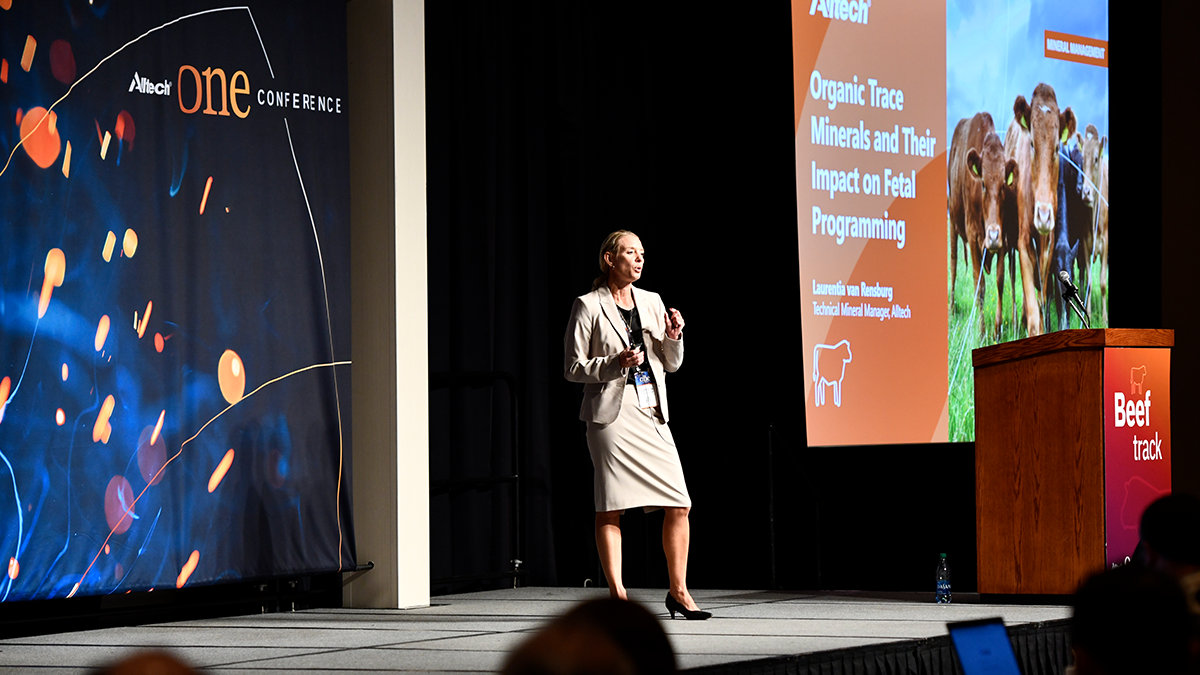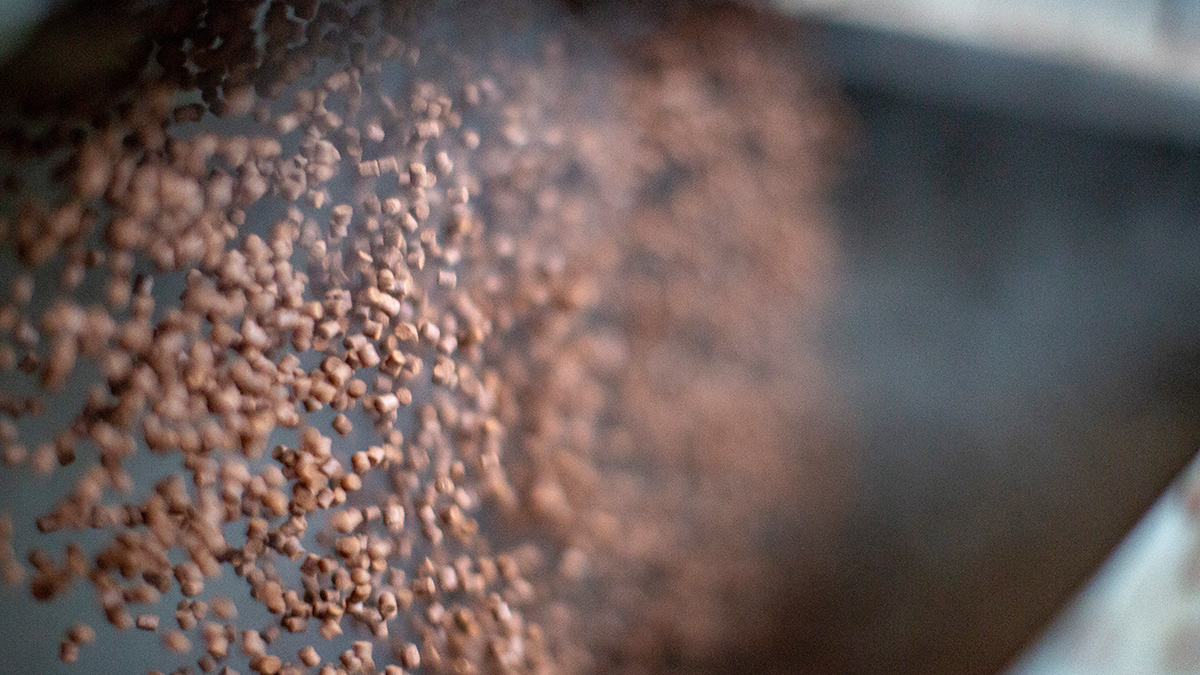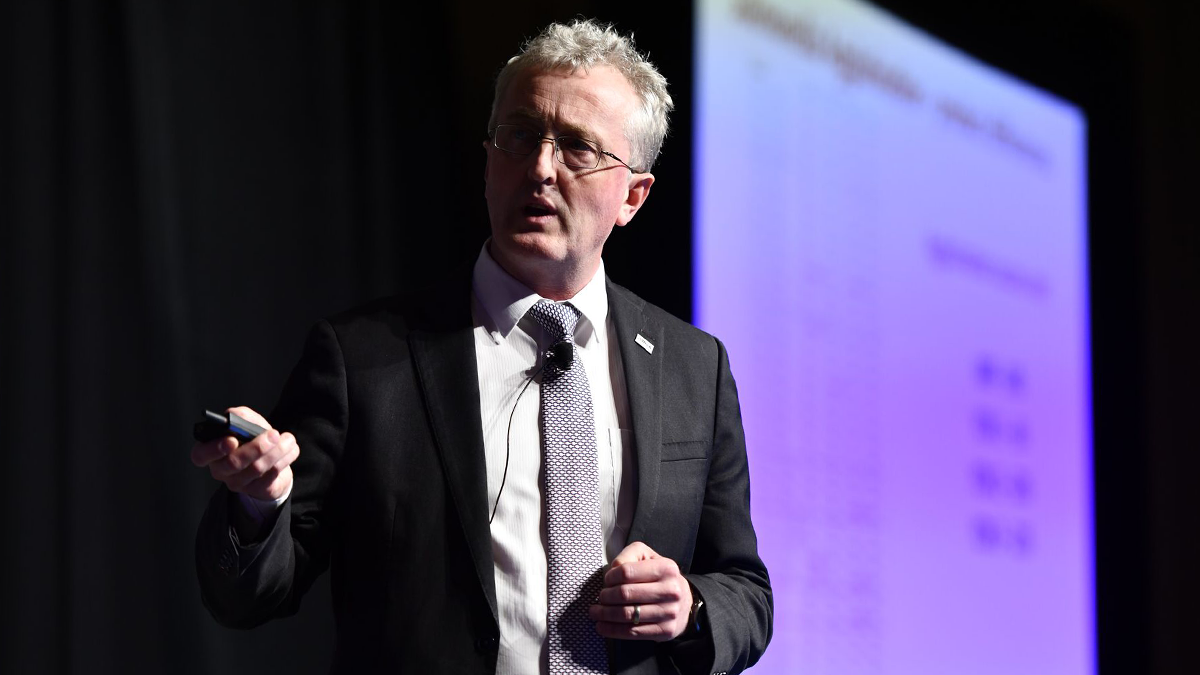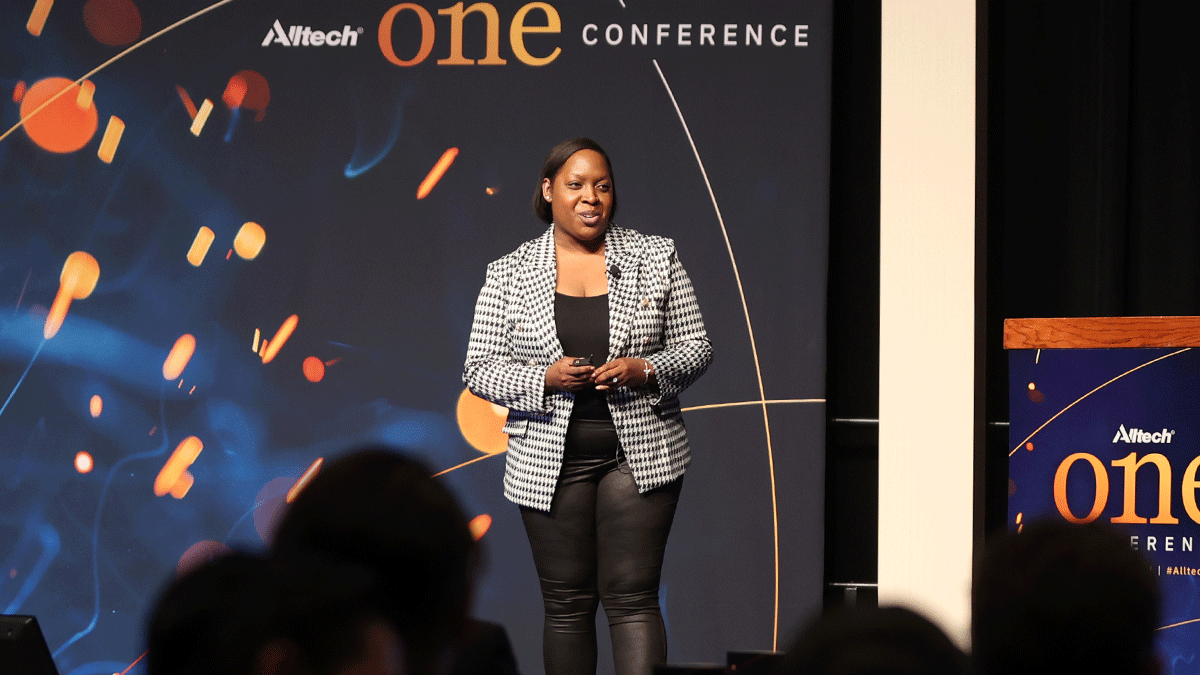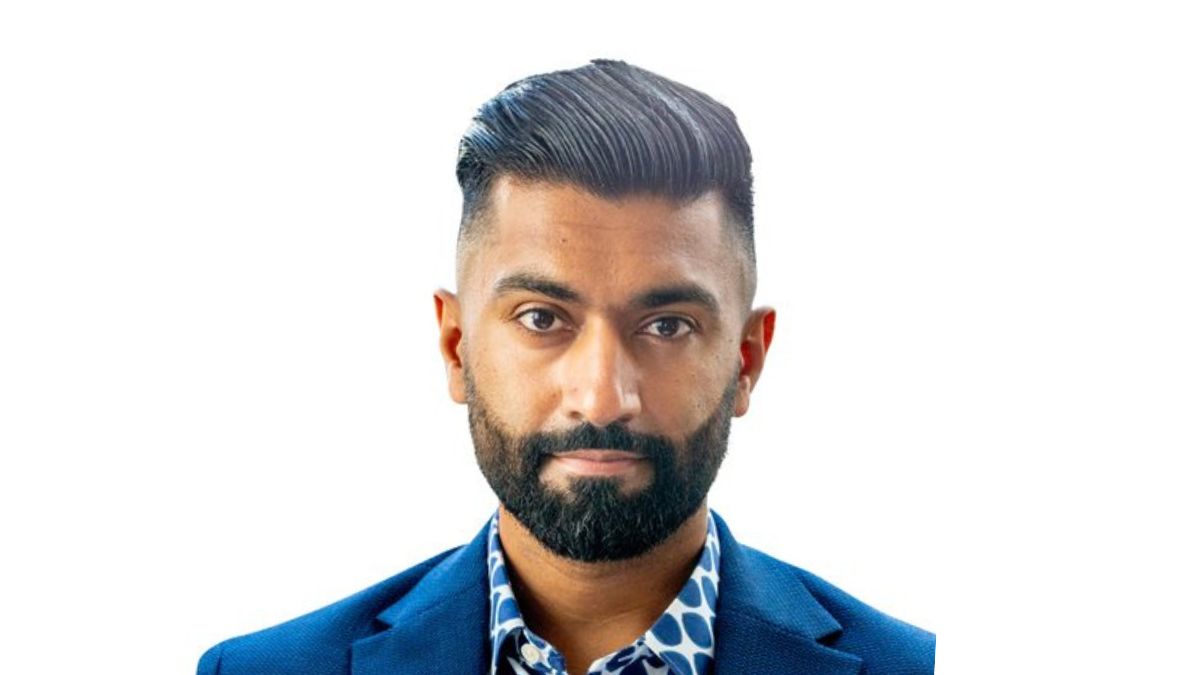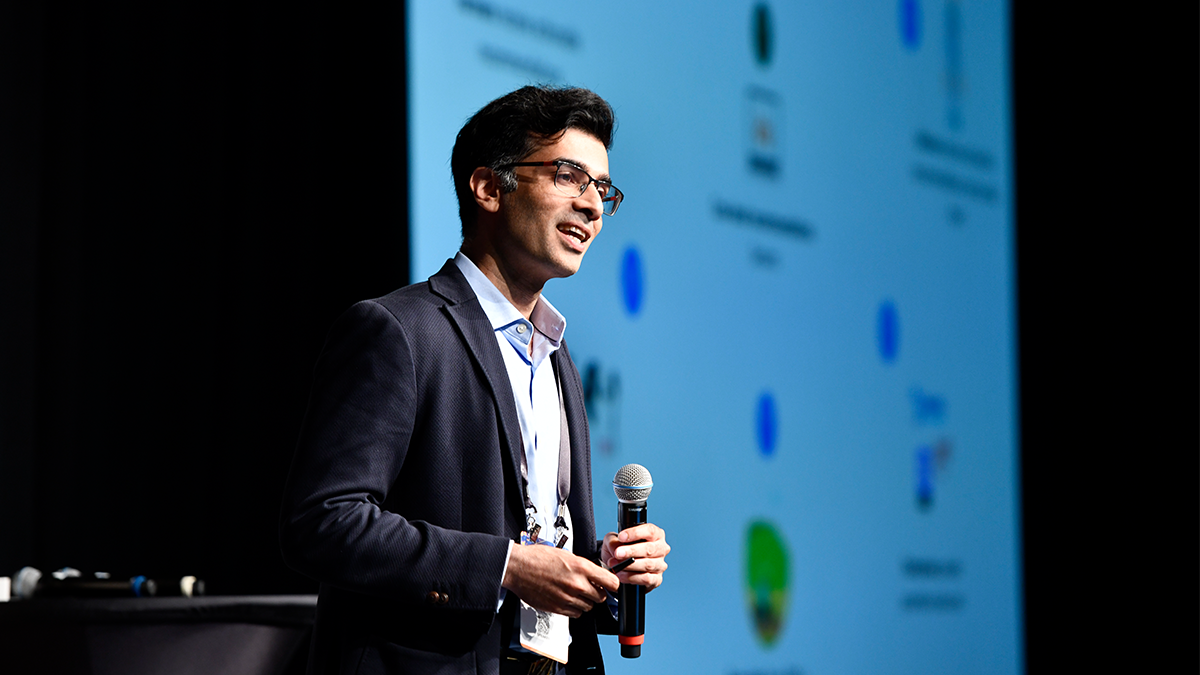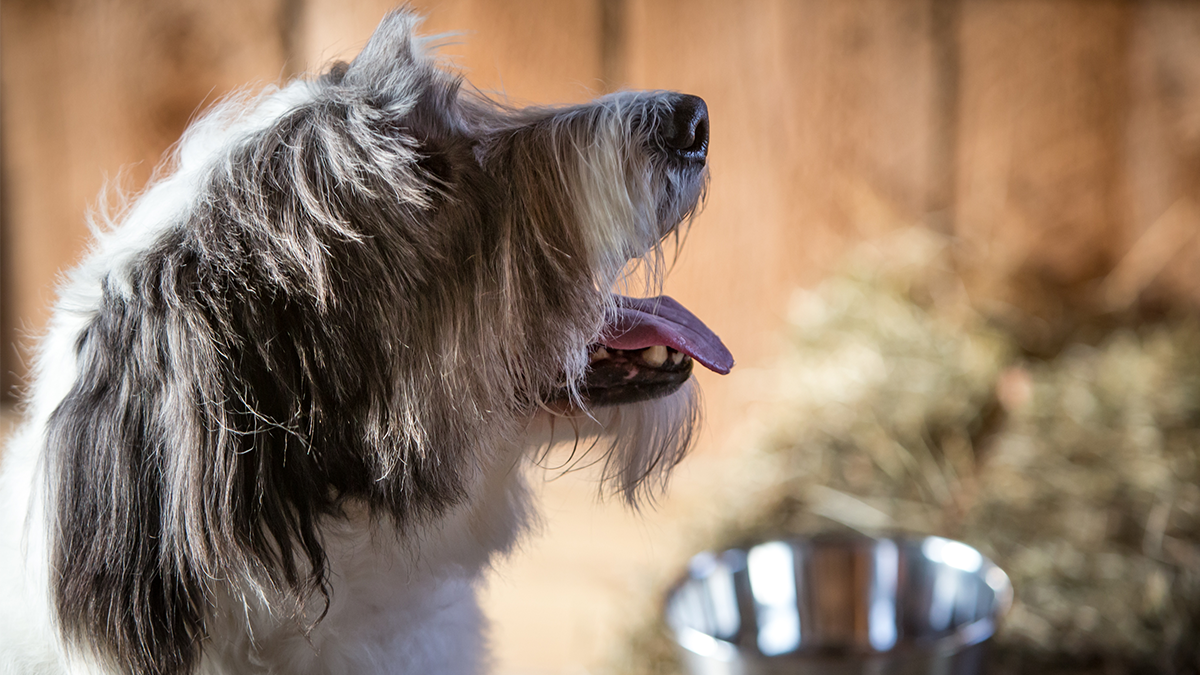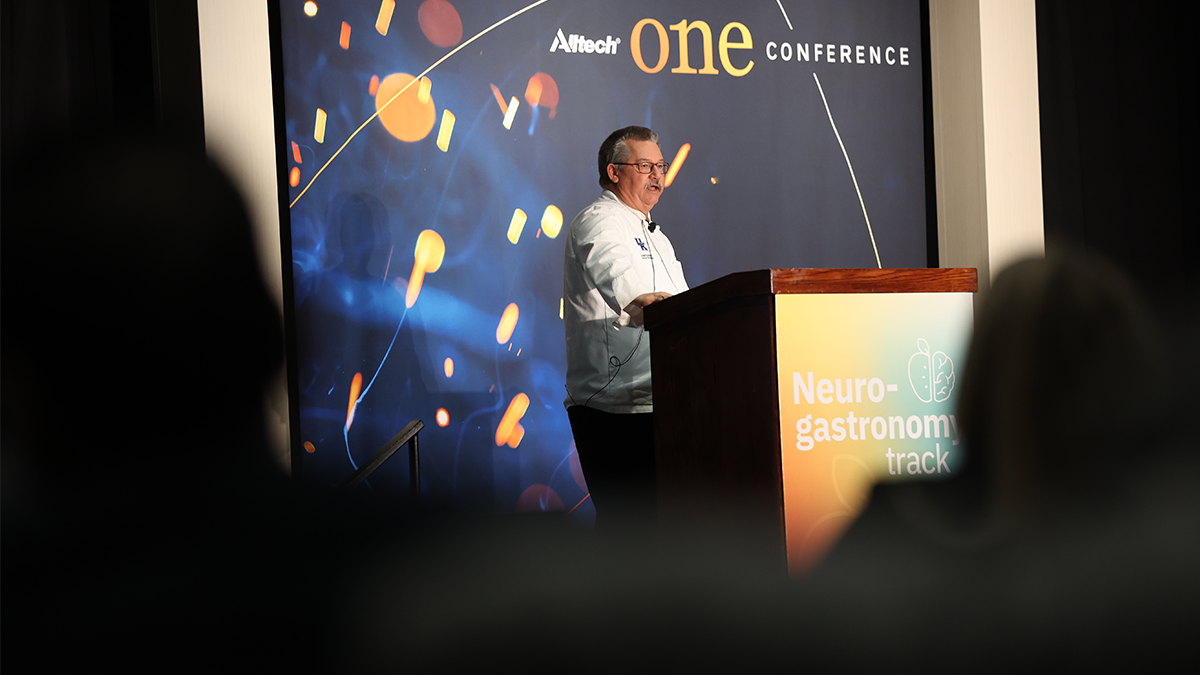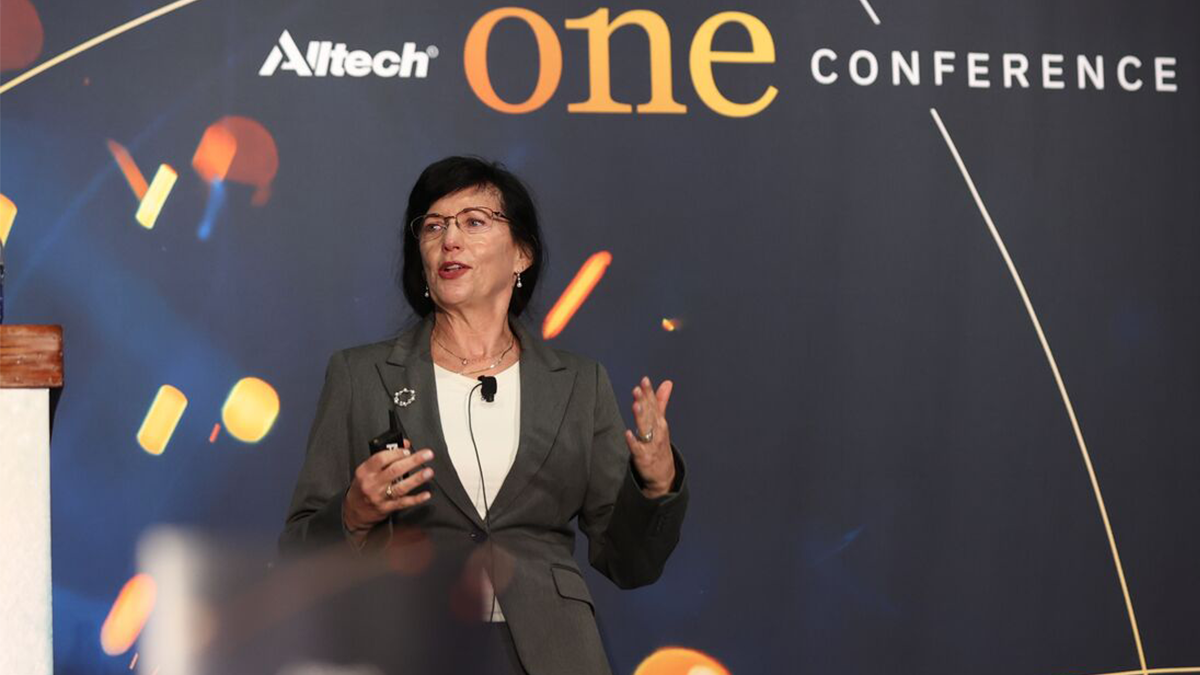Taste isn't the only sense we rely on to interpret flavor. Dr. Rachel Herz, neuroscientist, faculty at Brown University and Boston College and author of "The Scent of Desire," "That's Disgusting" and "Why You Eat What You Eat," joins the Ag Future podcast to discuss how neurogastronomy can help us better understand the role that smell, sight and even sound play in influencing what we eat.
The following is an edited transcript of the Ag Future podcast episode with Dr. Rachel Herz hosted by Tom Martin. Click below to hear the full audio or listen to the episode on Apple Podcasts, Spotify or Google Podcasts.
Tom: Welcome to Ag Future, presented by Alltech. Join us from the 2022 Alltech ONE Conference as we explore opportunities within agri-food, business and beyond.
I'm Tom Martin with the Alltech Ag Future podcast. Joining us is Dr. Rachel Herz, a psychologist, cognitive neuroscientist and leading world expert on the psychological science of smell. As you might imagine, COVID's ability to rob us of taste and smell has had (the) media beating paths to her door. In addition to serving on the faculties at Brown University and Boston College, she is the author of a number of academic and popular science books, including the leading college textbook on sensation and perception, “The Scent of Desire: Discovering Our Enigmatic Sense of Smell”. She is the author of “Why You Eat What You Eat: The Science Behind Our Relationship With Food,” also known as neurogastronomy — as one reviewer put it, a book that can make your dinner taste better. That's the focus of this conversation. Thanks for joining us, Dr. Herz.
Rachel: Thank you very much for having me.
Tom: Let's begin with the definition of neurogastronomy, a fairly recent science. What's that? What's it about?
Rachel: That's a good question. I'm sure, depending upon whom you ask, you'll get slightly different answers. But it is a term that was coined by Gordon Shepherd, a neuroscientist at Yale University, in 2006 in a paper to (the journal) Nature. What it has come to mean from the point of view of the Society for the Study of Neurogastronomy is really the confluence of research and practice and knowledge in the areas of neuroscience, sensory perception, psychology, agriculture, culinary innovation and also clinical conditions that are affected by our diet. It's really that aggregate. My focus is specifically on the sensory and psychological dimensions.
Tom: Well, most of us will say that we love food. You and food have a very special relationship that traces way back, as far as you can remember. Tell us about that.
Rachel: Well, from a sensory dimension, I was always being reprimanded by my mother for squeezing the bread and smelling things and always wanting to be very sensorially involved in what I was eating. I've always gravitated towards this. I did not know that it was going to lead me professionally to where I am today, but everything makes sense retrospectively.
Tom: In the introduction of your latest book, you cite the story of a Cadbury Dairy Milk chocolate bar as an example of how our brain processes new information about a particular food. Tell us about that.
Rachel: This is interesting. I'm not exactly sure what the current Cadbury chocolate bar looks like in the U.K.; this was several years ago. But they had changed from their original iconic squares to more rounded squares. They were thicker and more rounded and curvy. All kinds of loyal Cadbury bar consumers were calling into the company complaining that it was sickly sweet, that it was disgustingly sweet now that the shape had changed. They were convinced that, actually, it was loaded with extra sugar. This was highly unpleasant when, in fact, the ingredients, Cadbury insisted, had remained identical and all they had done was modify the shape slightly.
What this shows is how the shapes of what we are looking at and all kinds of things — we really do eat with our eyes first in lots of ways, and what we see really has an influence on our perception of taste. Rounded shapes actually make us perceive things to be sweeter. You want to serve dessert on round plates because on square plates, they actually are perceived as somewhat less sweet.
Tom: That's the essence of what this science is investigating, isn't it? That’s what neurogastronomy is all about. How and why do our senses, our mind and environment influence the way we experience food and our motivation to eat?
Rachel: Well, that's a very broad question. I think that, basically, our context is enormously important. So, the meaning of things (is something) we are deriving continuously from our interpretation of the environment that we're in. I would say, actually, the smell and taste of something, what's going on in our mouth and our brain, is probably the most faithful experience of food relative to what it is that we're actually putting in our mouth to the chemical components and so forth. But what we hear while we're consuming, what we see while we're consuming and, actually, the words that are around us, the ambience, the people that we're with, all kinds of other factors in the environment have an enormous impact on the way that we are actually perceiving this experience that we call food and eating. This is a really, really powerful interaction with the environment.
Tom: Let's talk about a few universally beloved aromas. Baking bread, for example; opening a bag of coffee beans and sniffing; vanilla — even though that latter one can throw quite a curveball, and we'll get to that in just a minute. But what is it about baking bread that comforts us so, and (what) about those coffee beans?
Rachel: I actually want to say that I do not think that those are universally pleasant smells.
Tom: Really?
Rachel: Yes. This is something that we've learned. I mean, every culture, interestingly enough, has a baked carbohydrate that is a comfort food. But, in fact, they're quite different depending upon the culture. There are cultures where bread actually is not a staple at all. In those cultures — for instance, in Asian cultures, where various rice dishes would have the equivalent comfort food quality because of the associations that we have with them.
The only fragrance that you mentioned that may be slightly universal is vanilla, and that would be because, actually, all of our experiences, our first experiences with food have a vanillin component to it because, actually, breast milk has a vanilla quality to it, and formula has a vanilla quality to it. Our first nurturing, cuddling experiences have vanilla or vanillin involved in it. But our other ones, to the extent that we think (that the) baking bread smell is amazing, (the) coffee smell is amazing and so forth, that has to do with our learned experiences. People, for instance, who don't like coffee don't like the smell, or people who don't have a culture where they've actually really experienced bread, the first time they smell baking bread, they would not necessarily find it especially appealing.
Tom: I mentioned that vanilla can throw a curveball at us. It's almost a cruel deception for those of us who have, as children, sniffed it and thought, “Wow, that's got to be good.” We take a swig and discover that it's not so good. It's our first encounter with this cognitive dissonance in our lives. Is vanilla an outlier where smell and taste are concerned?
Rachel: No. I think that's really interesting, what you're bringing up: the difference between a flavor and fragrance and how, for instance, like the vanilla extract — I mean, part of the problem that you're bringing up is how you've opened up that McCormick container and it smells really good, smells like cakes and sweets and treats, because that's what you'd learned. You'd never actually had it pure from the bottle, and then you take a taste and it's that bitter alcohol quality that you're really shocked by.
But, in fact, real vanilla grown in nature isn't quite as harsh as that and has more of the aromatics (that) can make it more appealing. Interestingly, coffee is another fragrance and flavor that are dissociated, where people often find the taste of coffee to be really, really bitter but enjoy the aroma of it, depending upon how sensitive you are to bitter (flavors) or not — it depends on whether or not you like your coffee black or you put a lot of sugar and cream into it and so forth. Those are examples of dissociation between how the scent can be associated with things that we consider to be more sweet, but the taste does not always correlate.
Tom: Are there any food smells that are universally repulsive to people, or is that a cultural thing as well?
Rachel: From my perspective, it is cultural. Even though there was a study that recently came out suggesting that there are these fragrance responses that were universal, they were, I would say, still limited in terms of the different cultures that were assessed, as well as the fact that the fragrances that were presented were always still presented in a context. The idea of context being the mediator through which we're making interpretations is really my go-to whenever I try to think about how is it that we're responding to something. The idea of universally disliked scents, I think, is just (as) potentially inaccurate as universally liked, except for the degree to which we are being irritated at the same time that we're perceiving the food or we're perceiving the scent.
For instance, something that's burning in our mouth — if we're highly sensitive to the burning of, let's say, a hot pepper, then we're not going to like it, or if something is really burning our nostrils, like the scent of ammonia. That being said, we can learn through social interactions and the social dynamics of cuisine to like hot-pepper burn. People who (like) the food that they're eating, they've grown up with having a lot of hot peppers or because of the social context of eating hot peppers and hot food and so forth has become very positive, that burn can become much more diminished in perception while we're eating it. But if you were to give somebody in a laboratory that same amount of capsaicin — that's the chemical that makes the burn of a hot pepper — to someone who says, “Oh, yes, I love chili peppers, and I did go to chili-eating contest” and so forth, but if you give it to them in pure capsaicin form out of the context of food, they're going to go, “Y’all, this is terrible. This is too much.” It's because the food context is missing.
Tom: That's really interesting. We tend to eat when we're hungry. That's a given. But are there reasons besides hunger why we eat the foods that we do?
Rachel: Yes. In fact, that's the downfall of many people. “Why am I eating now? I'm not even hungry.” There are all kinds of reasons we eat when we're not hungry. We can be lured by the aroma of a food because it's suddenly very appealing, even though we're not actually starving. We can be emotionally affected to eat. Some people eat when they're bored. Other people eat when they're stressed. Other people, for instance, can't eat when they're emotionally really worked up. Our emotions play a big role.
Also, again, going back to context, the social situation we're with. If you're sitting at a table, you're with a group of people, there's food on it, even if you're not hungry, you're much more likely to keep noshing at it. If it's in front of you, you'll keep eating at it. For instance, that bowl of popcorn while you're watching television — this sort of reaching mindlessly for what's there and not paying attention to actually whether you're hungry or not.
One of the things that we can do to make our consumption more relative to our hunger is ask ourselves these questions while we're eating: Am I actually really hungry right now? Do I actually feel satiated? Is this really pleasurable? I mean, if we're highly distracted and we're eating, we're not even paying attention to the pleasure of eating.
Tom: If we're careful, if we study this, can we actually manipulate our mood according to what we eat?
Rachel: There is some research which has shown that giving people sweet things, which is universally appealing — so the taste of sweet, we are actually hardwired to like, because of it being ready accessible calories. It makes us happy. It initiates the reward activity in our brain, and dopamine and endorphins release and so forth. Sweetness, at least briefly, actually changes our mood to make us happier and more cooperative and more agreeable. It looks also like, from the research that's been done, that tasting bitter can temporarily make us less agreeable and more hostile, depending on the situation.
Tom: There are certain tastes that just go together. They just seem to be — it just seems to be a natural. Hershey's has made Hershey's out of the Reese's Peanut Butter Cup, which is peanut butter and chocolate. Is there a reason that peanut butter and chocolate particularly go together so well?
Rachel: I think not. I mean, I really think that this is a construction of the culture that we live in and a good idea, a great marketing campaign. I mean, if you think of something like Nutella, which was originally Italian, but that's hazelnut and chocolate, and that's also really good. I mean, definitely, I would say that the flavor compounds in nuts and in cocoa beans have commonalities that they mix relatively well. But you could also think about things that seem to mix badly when you think about them conceptually but, actually, we have come to really like them, like salted caramel, and these pretzel salted caramel concoctions these days that are actually very popular. If you would have thought about it maybe 20 years ago, you (would have) thought, “Salted caramel? That must be awful.” But again, as a function of marketing and presentation, we‘ve become more willing to accept the possibility of tasting it. Then we like it because, actually, the taste of salt is very innately appetitive, as is the taste of sweet.
Tom: What are some recognizable ways — ways that our listeners would instantly say, “Oh, yeah, I can relate to that” — recognizable ways that food advertisers use neurogastronomy to influence the choices that we make, and do they use the science?
Rachel: I would say, yes, they do, in terms of making us want more. The idea of that is moreish, (and that) is a food science word and a food manufacturing word where you just can't have one. You need to eat more. Definitely having things — I mean, potato chips, I think, are a classic example. They're actually not very satiating, so they don't make us feel very full. They are high in salt. They are high in fat. (Those) two compounds again. Fat is something that we are innately drawn to as well. You can't just have one. Manufacturers know that. This is something that we're not going to satiate on easily. It's something that we can easily go through a bag and not even feel particularly full. Meanwhile, we've actually consumed a lot of calories.
There are even ways that the advertising on the packaging can influence us in terms of what we're perceiving. The more examples of the picture of what you're going to be eating is on the product, the more likely you are to buy the product. The language used in describing the product can also be highly motivated. If people use words of indulgence, we're much more excited about possibly purchasing it than if it says “healthy” and so forth. There are definitely things that food companies use to their advantage.
Tom: Can what we eat change our behavior in some way?
Rachel: Well, I mean, yes, to the extent that certain tastes, because of their biological mechanisms with liking and disliking, can alter our mood; that can potentially change our behavior. There are even things that can happen as a function of the food environment that we’re in. When we are feeling like we’re being especially virtuous as a function of what we might be purchasing, if we think, “This is organic or fair trade” and so forth, it can actually have negative consequences downstream on our interactions with other people. We can actually become less friendly and generous when we think we've done an ethical good deed by doing something in our purchasing behavior. It's important to be aware of how we're being subtly influenced by the environments that we're in and how this may have an impact not just on what we're purchasing but even (on) our social interactions.
Tom: I think that goes to the follow-up question that I have — that is, can behavior change what we eat?
Rachel: Yes. We certainly can make many conscious choices on the basis of what we are perceiving to be better or worse under a given situation if we have the means to have the luxury to make those choices. I mean, one of the things I think that's really important to recognize is it's really a privilege to be able to decide to buy the organic bananas versus the conventional bananas or the fair-trade chocolate versus the Hershey's and so on, because all these things are always more expensive. Making those choices gives us an advantage socially at many different levels, and that can have all kinds of downstream effects in lots of different directions.
Tom: When we dine — and I'll cite the American tradition of Thanksgiving, because this tends to happen at Thanksgiving dinner — we tend to go back for seconds. I don't know why, but we do. Then some people actually go back for thirds. What's going on there? How can we resist that urge to just keep going? It's kind of a form of gluttony, I guess.
Rachel: Well, it actually has to do with the variety being the spice of life — or, in this case, variety being the enticement to eat. The fact that Thanksgiving meals have such variety — and it's the same thing (that) happens at the all-you-can-eat buffet, where you have a whole lot of different variations of possibilities that you can consume and everything looks different and it looks appealing. You just have to taste one and the other and then another one and so forth. What tends to happen, first of all, with all the variety is we want to sample everything, and then we might find there is something in particular that we really enjoyed, so we want to go back for more of it.
There's a couple of things that we can do depending upon the situation that we're in. At (the) Thanksgiving table, we don't really have the option to be sitting further away from the food normally — because, actually, the further away from the food we are, the more our natural tendency to be slightly lazy can kick in. If you're in an all-you-can-eat restaurant and you're far from the buffet, the chances of you making five trips is a lot lower than if you're at the table that's right beside the buffet.
But one of the things to consider, for instance, at Thanksgiving meals and meals where there's a lot of variety of different things on the table is to be aware — again, this is, I think, just knowledge is power, in this case, awareness of what's going on, that there is all this variety that is luring us to be interested in trying it. It's also the case that because the flavor is different with every single thing, we're not satiating out. We're not zoning out or graying out at “Oh, this all tastes the same.” If everything tastes the same, we actually eat a lot less. When things taste different, we go to the next thing. It's kind of like the binge eating, where I just had a tub of ice cream; now I'm going to eat a bag of potato chips, and then I'm going to move to something else that's completely different.
If you want to eat less, you want to have things taste all the same, and you don't want to have a lot of variety in front of you. But that actually isn't really good for health. I mean, in health terms, from the food perspective, you want variety, and you want moderation. You want to be able to rein yourself in, but you want variety.
Tom: In the end, a little bit of self-discipline helps. In your book, you described the — and this is so interesting to me — you described the ideal plate to use when we're trying to cut back on our intake. Tell us about that.
Rachel: An ideal plate is round and red and small. That's because your round plates, first of all, tend to go with a lot of the foods we eat in a couple of different ways. (For) one thing, roundness can also make us perceive something as possibly being sweeter. For desserts, it's particularly good. The other thing with round plates is that for things like a pasta, when you put something on a round plate, because that can clump in a way that is also spherical, it looks like — for instance, if you had a small plate and you took a serving of pasta, you could fill that small plate very quickly, and that could look like a lot of food. That appearance of a lot of food is actually in and of itself more satiating. Whereas if you had a much larger plate, that same scoop of food would be sitting in the middle of it and you'd have all this empty plate around it and think that, “Oh, I really haven't gotten very much here.” Even though you've eaten the exact same amount that's on the small plate, you don't feel nearly as satiated and happy and satisfied with it, so we're more likely to eat more and serve ourselves more.
The red aspect of it comes from the fact that there's some evidence that suggests that red in nature is a danger warning, a get-my-attention cue. I mean, we are much more likely to pay attention to what we're eating when the vessel we're eating from is red. We are actually aware of the fact, “Oh, I just finished this. Do I actually need to go back for more?” Again, it's about awareness. When our attention is drawn to what we're eating, we get more pleasure from it because we're actually savoring the flavor. We're in the moment; (it’s) sort of the idea of mindfulness. We can figure out whether or not we want more or not.
Tom: Does that mean, if you're trying to regulate your diet, you're dieting, that maybe you should use a red plate?
Rachel: Yes. Well, first of all, I think dieting is always a terrible idea. Dieting, in general, is something that you want to avoid. You don't want to ever think of yourself as restricting what you're going to be consuming, but you want to change the way you think about what you're consuming. Helpful hacks to do that are, for example, using smaller plates and round and red plates, could be. But each person has to figure out what works for them. That's one of the reasons why most general popular fad diets fail, is because, first of all, they're typically thought of as being for this limited timeframe. “I'm going to starve myself. I'm going to put myself under a situation of actually unpleasant conditions.” That's something that nobody likes, which is why they can't be sustained. Also, they don't comport with the way that I normally consume food, the way that I socially consume food, the way that the plates in my kitchen are and so forth. We have to modify for the way we are, in particular, too.
Tom: One more plate question. We've heard it said in our interviews in here that, for some reason, pie tastes better on a blue plate. Is there something to that?
Rachel: Actually, that's interesting. I'm not sure who would have said that, because a blue tends to be more associated with salts from a color perspective, and the red and pink tones are more associated to sweetness. The research that's been done that I know of has suggested that things taste saltier (on a blue plate). For example, if you had popcorn in a blue bowl, it tastes saltier than if it's in a red bowl. It tastes sweeter if it's in a reddish-pink bowl than in a blue bowl. But it could be dependent. I'm not sure. I haven't heard about the pie in a blue plate, let's put it that way.
Tom: The science, the term neurogastronomy was coined in, I think, 2006. It hasn't been around very long at all as a discipline. All of a sudden, here at the Alltech (ONE) Conference, we're hearing about it quite a lot. Is that the common experience out there? Is it really suddenly catching on, as it were? What's going on in that world?
Rachel: I think it's slowly catching on. I mean, one of the things which is a great advantage of Alltech being here in Lexington, Kentucky, is that where neurogastronomy really got started and where the Society for Neurogastronomy got started is here at the University of Kentucky and (by) people you've already spoken to today about this. They are part of the founding members, and the fact that Alltech is here and UK is here and these people are here, I think, really makes this a possibility.
But I think it’s also (that) people are generally becoming more aware that there is this field of neurogastronomy, that we can understand our relationship with food better, and that can lead us to make healthier and happier choices. That is slowly getting into the zeitgeist, and people are slowly getting to know about it more. I mean, as one example, I actually teach a research seminar on neurogastronomy at Boston College. Every year, there are the classes — well, now it's completely full, and the waiting list gets longer and longer. It's the question of getting out: The more people know about it, the more they're interested in it.
Tom: Well, terrible pun alert, Rachel, but what's on your plate now?
Rachel: Well, my first area of research expertise is in the sense of smell. I am getting more into that again. As you mentioned, my first book was called “The Scent of Desire”. I'm thinking about another book about the sense of smell and also particularly coming at it from the lens of health. One of the things that neurogastronomy has made me focus on more is the health component. I want to look into the health and the sense of smell component. I actually just have given a lecture and written a paper about olfactory virtual reality being used as both treatment and prevention for post-traumatic stress disorder.
Health at both mental and physical levels, health from the point of view of both, what can our sense of smell do from the point of view of our health — like if you smell this, how this will have an impact. But actually, also, how the functioning of our sense of smell itself is deeply tied to our wellness, our lifespan and our health span and how alterations in our sense of smell can be real harbingers for decline and possibly disease, and COVID being the prime example that's come up in the last couple of years. That — my focus has really turned a lot towards that.
Tom: Olfactory virtual reality?
Rachel: Yes.
Tom: That's a thing?
Rachel: That is a thing.
Tom: How does that work?
Rachel: That is — basically, there is a company in Burlington, Vermont. They're the first company that actually has a wearable device to market with (olfactory) virtual reality as being a whole component of it. It's essentially — so you're probably familiar with the typical headset for virtual reality, which enables the user to get this visual component of this altered world, the auditory component and so forth. This is a snap-on piece that goes onto the bottom of the headset that is presenting odors to you while you're in this virtual reality and can really do it in a spatial way. For instance, you get closer to the flowers in the forest in your virtual reality set, and the scent of the flowers becomes more intense as you get close to that. You can pick things up and put things down and maneuver throughout this whole landscape.
The fact that scent is there makes the presence — so the idea, one of the key factors of virtual reality is increasing this concept of presence. You really feel like you're immersed in this other world and actual reality around you has completely fallen away. Because the sense of smell is so tied to emotion and association and so on, it can really up the ante, as it were, on the presence that we can experience in virtual reality, (so you’re) much more there emotionally and much more there viscerally. It is something that is happening and becoming and can have all kinds of applications from clinical (standpoints), as I just mentioned — and not just PTSD but a whole variety of emotional and other sorts of clinical conditions. Pain is another one, as well as, obviously, extrapolation to entertainment, gaming and so forth. I think this is the new horizon.
Tom: Does the technology stop there? Is there any possibility of it extending to taste?
Rachel: That's a great point. There is some virtual reality which — so basically, virtual reality has experimented with all five senses. There is some haptic dimension. You can have virtual reality where you're being jostled around, as well as you can feel motion and so forth. There have been some which have used people tasting things at that same time, but not so much in — so you can be tasting something and seeing, let's say, the food being made and so forth, but I don't know of any mouthpiece. What's really unique about this, unlike the haptic component, where you have to be sitting, let's say, in some kind of a chair which is moving around or having something like that, this is something with the olfactory component that attaches to the headset so you can maneuver however you want in the environment. You don't have to be situated in one place or sitting in a special chair actually tasting something at the same time. This is what brings it to the more digital level, which hasn't been done with our other — with touch or taste yet.
Tom: Fascinating. Dr. Rachel Herz, a psychologist, cognitive neuroscientist and leading world expert on the psychological science of smell. An honor to speak with you, Dr. Herz.
Rachel: Thank you so much. It's been great.
Tom: For the Alltech Ag Future podcast, I'm Tom Martin. Thank you for joining us. Be sure to subscribe to Ag Future wherever you listen to podcasts.
